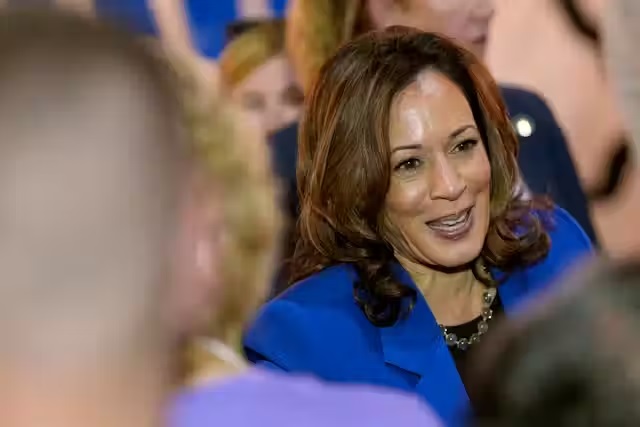by Adrian Beaumont, The University of Melbourne
The US presidential election will be held on November 5. In analyst Nate Silver’s aggregate of national polls, Democrat Kamala Harris leads Republican Donald Trump by 47.1–44.6% with 4.2% for Robert F. Kennedy Jr. In my previous US politics article last Wednesday, Harris led Trump by 46.8–43.7%.
Joe Biden’s final position before his withdrawal as Democratic candidate on July 21 was a national poll deficit against Trump of 45.2–41.2%. By the election, Biden will be almost 82, Trump will be 78 and Harris will be 60.
The US president isn’t elected by the national popular vote, but by the Electoral College, in which each state receives electoral votes equal to its federal House seats (population based) and senators (always two). Almost all states award their electoral votes as winner takes all, and it takes 270 electoral votes to win (out of 538 total).
In the states narrowly won by Biden in 2020, Harris leads Trump by three points in Michigan, 3.4 points in Wisconsin, 1.5 points in Pennsylvania and 2.1 points in Arizona. Georgia and Nevada are the only Biden-won state that have Trump ahead, by 1.4 points in Georgia and 0.2 in Nevada. Harris is barely ahead by 0.1 points in North Carolina, a state Trump won in 2020.
Since last Wednesday, most movement in state polls has been slightly favorable to Trump, but not in North Carolina. If Nevada and North Carolina are undecided because of the near-ties in polls, Harris currently wins the Electoral College by 281–235 with 22 electoral votes undecided (Harris led by 287–251 last Wednesday).
Silver’s model gives Harris a 53.5% chance to win the Electoral College, a drop from 56% last Wednesday. It gives Harris a 65% chance to win the national popular vote. Harris needs about a two-point win in the popular vote to be the Electoral College favorite. It’s near a 50–50 chance for either Harris or Trump, but Harris is the slight favorite.
The Democratic National Convention will be held from Monday to Thursday this week. Normally major party presidential candidates are very well known to voters by the convention as they need to win primaries that are held early in an election year. Harris has only been the Democratic candidate since Biden’s withdrawal, so the convention is an opportunity for her to personally appeal to voters.
Conventions usually give a temporary bounce to their party’s candidate, which fades in the weeks following a convention. Silver said on Friday that his model will expect Harris to be leading by four to five points nationally after the convention.
If this occurs, Harris’ win probability will not change much. If Harris only leads by two points after the convention, it would be an underperformance and her win probability would decrease. If she leads by six, she would be overperforming and her win probability would increase.
In economic data, US headline inflation rose 0.2% in July after dropping 0.1% in June, for a 12-month rate of 2.9%, the lowest since March 2021. Core inflation rose 0.2% in July for a 12-month rate of 3.2%, the lowest since April 2021. The lower inflation is likely to encourage the US Federal Reserve Board to cut interest rates.
Real (inflation-adjusted) hourly earnings were up 0.1% in July, but real weekly earnings were down 0.2% owing to a drop in hours worked. In May and June, real earnings were up 0.8–0.9%.
Adrian Beaumont, Election Analyst (Psephologist) at The Conversation; and Honorary Associate, School of Mathematics and Statistics, The University of Melbourne
This article is republished from The Conversation under a Creative Commons license. Read the original article.
